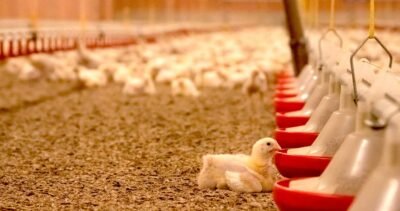Environmental Challenges Associated with Airborne Bacteria and Antibiotic Resistance Genes in Poultry Farms

Dr. Majed Hamed Al Saegh / poultry pathologist / Australia
26/ 6/ 2025
Abstract:
The presence of airborne bacteria, gaseous pollutants, and antibiotic resistance genes (ARGs) in the aerosols of poultry farms poses a growing threat to animal, human, and environmental health. This report aims to review the overall composition of bacterial communities in the air inside and outside poultry farms, analyze the prevalence of resistance genes, and the influence of environmental factors such as temperature, humidity, wind speed, ammonia (NH3), and hydrogen sulfide (H2S) concentrations on these phenomena. These studies rely on 16S rRNA gene sequencing techniques to characterize microbial communities, in addition to quantitative PCR techniques to monitor the abundance of ARGs. Recent research findings indicate a high similarity in the abundance of some resistance genes within poultry houses and in their surrounding areas, suggesting the potential for airborne transmission of these genes. A significant association has been documented between some bacterial genera, such as Staphylococcus and Corynebacterium, and the abundance of ARGs, necessitating preventive interventions to improve ventilation and strengthen biosecurity measures.
1. Introduction
Bioaerosols from poultry farms represent a major source of environmental pollution and contain a mixture of fine particulate matter, gaseous pollutants, bacteria, fungi, and viruses. Antibiotic resistance genes are of particular interest, given their direct association with public health threats through animal-to-human transmission. In this context, it is important to study the relationship between environmental factors and the components of bioaerosols, including bacteria and ARGs, to understand the mechanisms that enable their spread beyond the farm.
2. Methods used to monitor air pollution in poultry farms
Methods for studying airborne bacterial communities include air sampling techniques using high-flow devices, DNA extraction from samples, 16S rRNA gene sequencing to analyze bacterial composition, and quantitative PCR to determine the abundance of antibiotic resistance genes. Environmental factors such as temperature, humidity, wind speed, and gas concentrations are also monitored using portable weather stations and chemical analyzers.
3. General Results
For monitoring airborne bacteria and ARGs, studies indicate that bacterial communities within poultry farms are dominated by genera such as Actinobacteria and Firmicutes, while Proteobacteria are more prevalent outdoors. In terms of diversity, samples taken from downwind areas show greater microbial diversity compared to indoor areas. Zoonotic pathogens were observed at all sites, with relatively similar abundances of antibiotic resistance genes both inside and outside the farms, particularly blaTEM, tetQ, ermB, and sul1.
4. Impact of Environmental Factors on Bacterial Communities
Environmental conditions such as temperature and NH3 and H2S concentrations influence the composition of bacterial communities, with higher temperatures and increased gas concentrations being associated with increased abundances of some opportunistic bacterial genera. Wind speed also contributes to the transport of fine particles outside the farm. Humidity, however, had a relatively weak effect on bacterial communities.
5. The Relationship Between ARGs and Bacteria
Network analyses indicate strong associations between some antibiotic resistance genes and specific bacterial genera, such as Kocuria, Bacillus, and Escherichia, suggesting that they are likely hosts of these genes. In contrast, other genera from the outdoor air showed negative associations with these genes, which may indicate natural inhibitory effects.

6. Conclusions and Recommendations
This report emphasizes the importance of understanding the sources and distribution of airborne bacteria and ARGs in the poultry farm environment. The results indicate the need for regular monitoring of the ambient air around farms, attention to the design of effective ventilation systems, and the implementation of sound waste management practices to limit the spread of contaminants. It is also recommended that studies on the use of antibiotic alternatives and continuous environmental assessments be intensified to reduce the risks associated with airborne microbial resistance.



